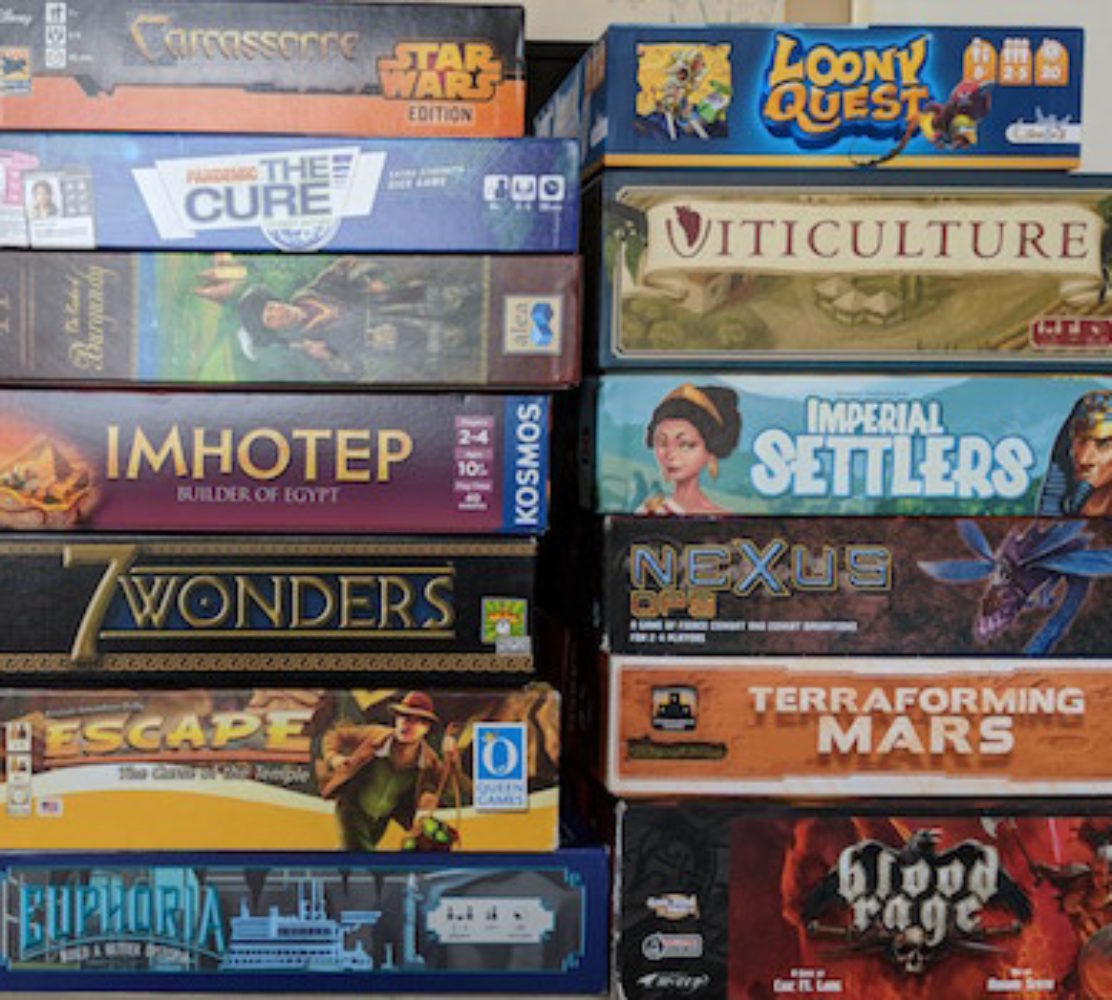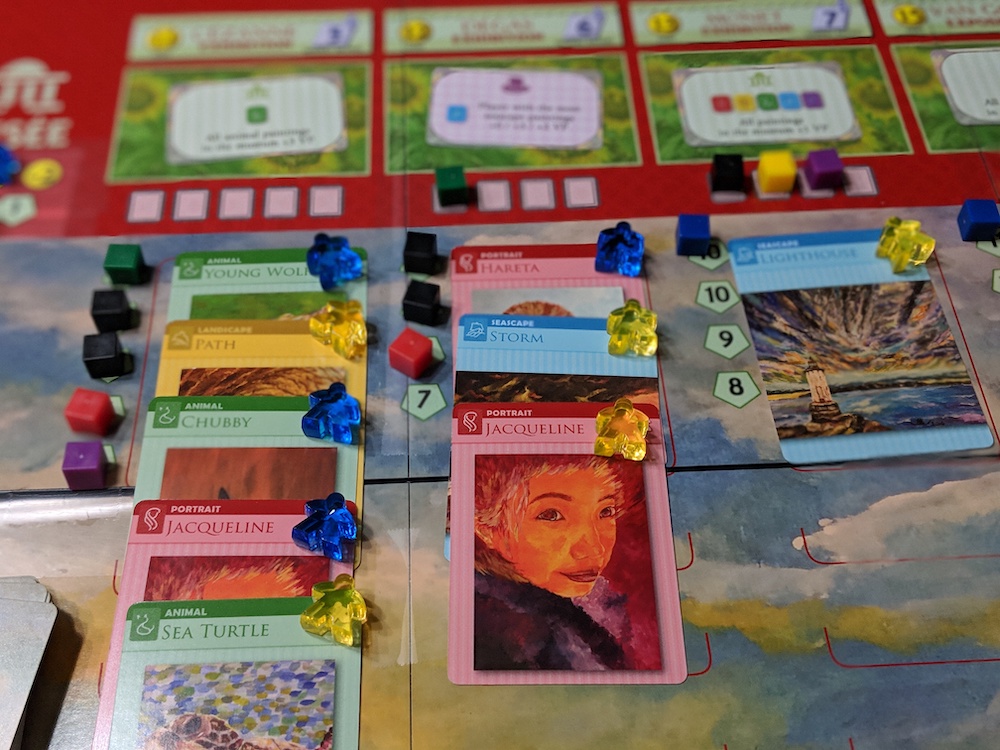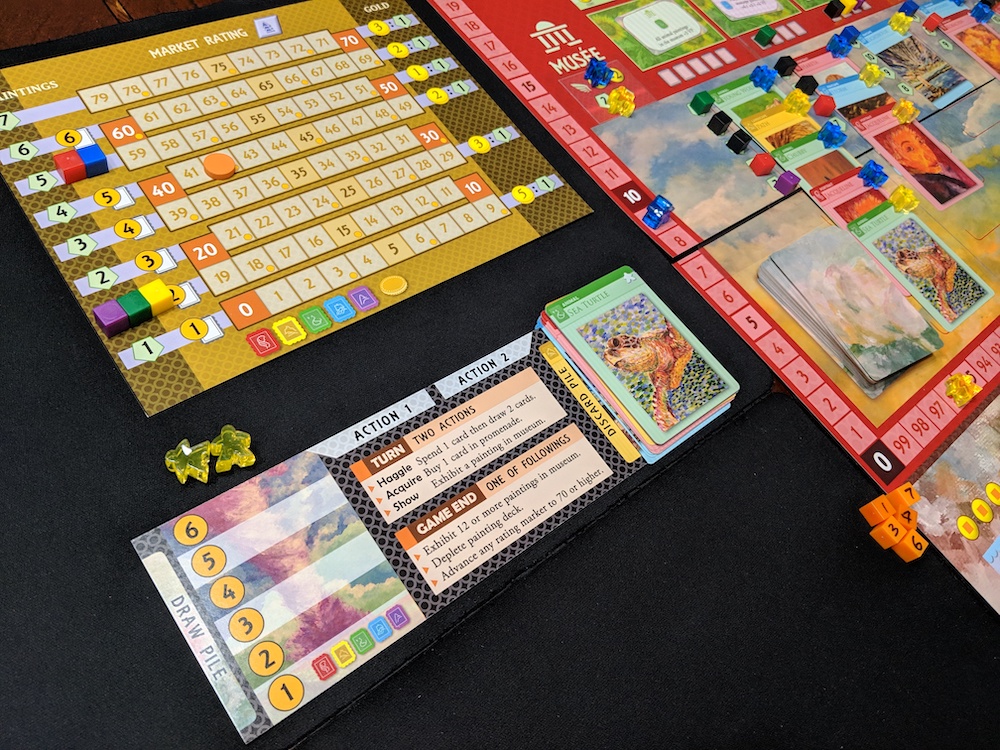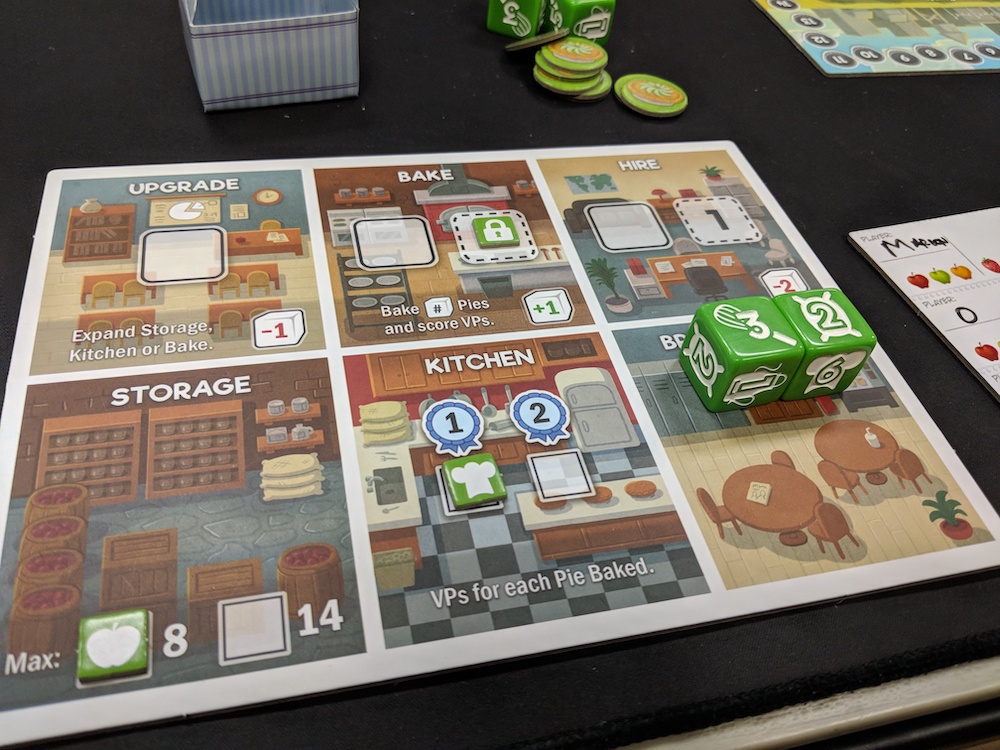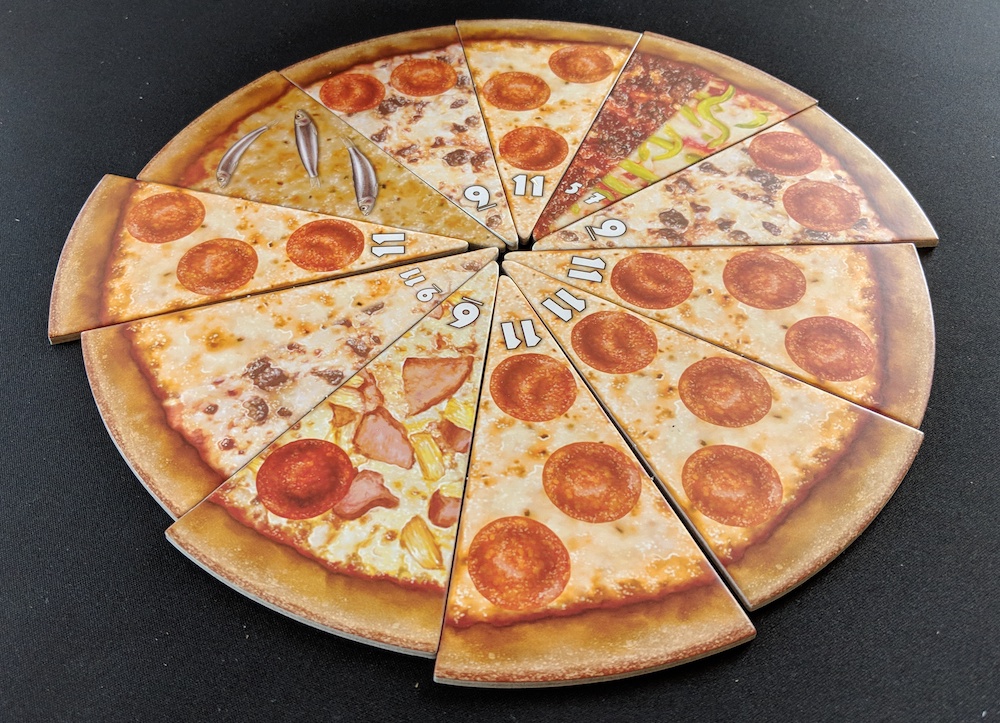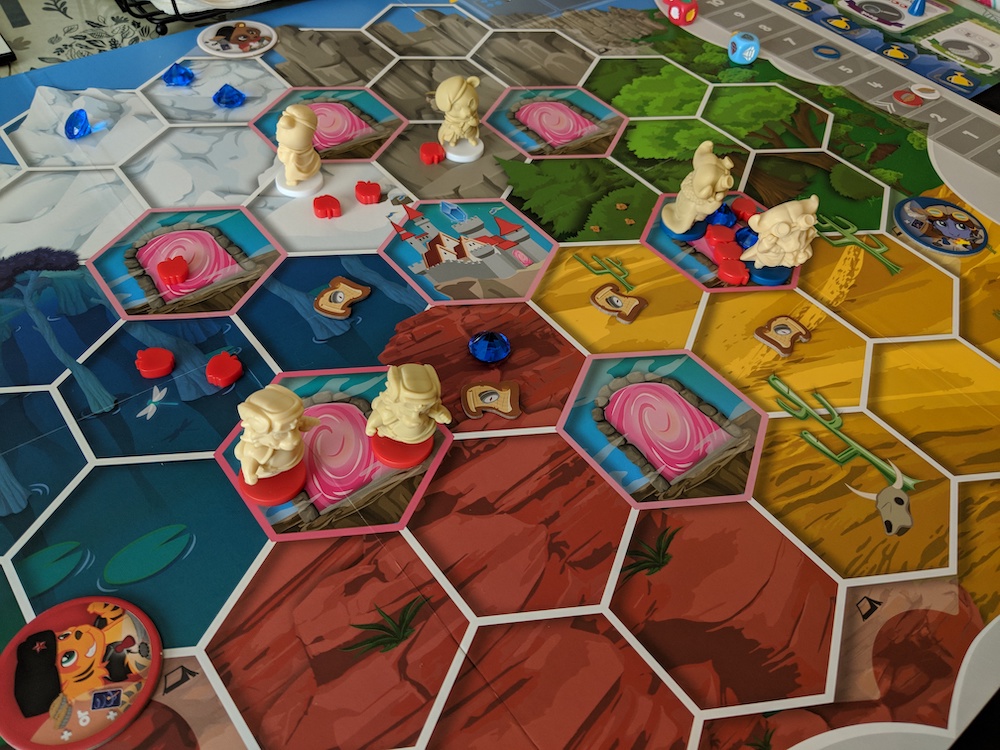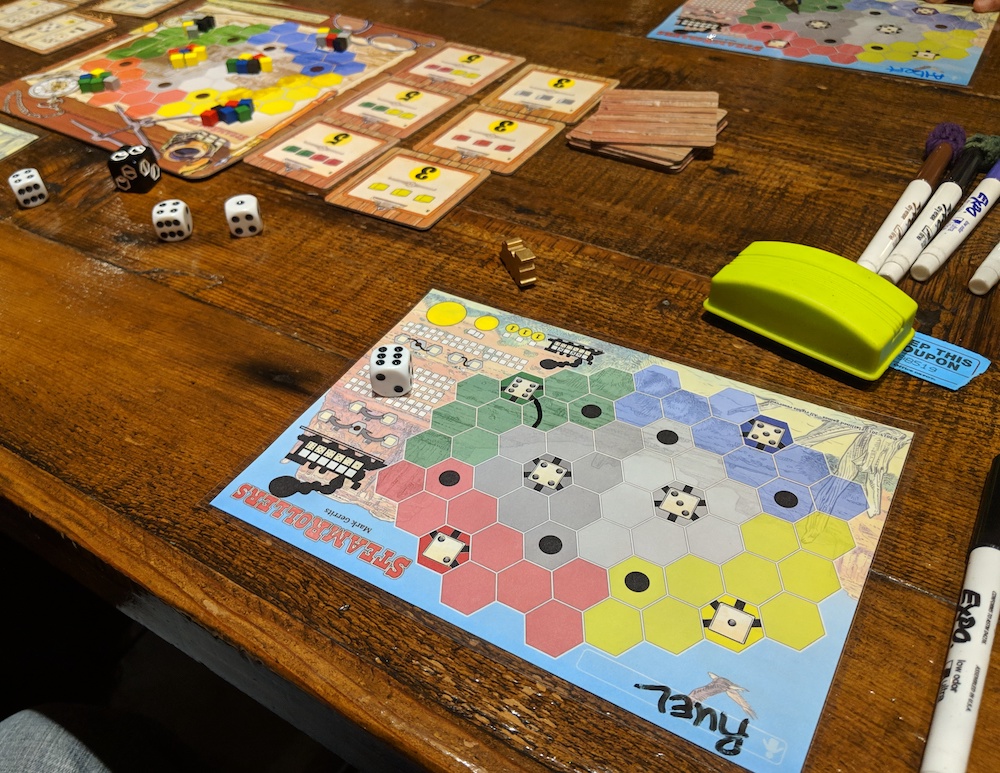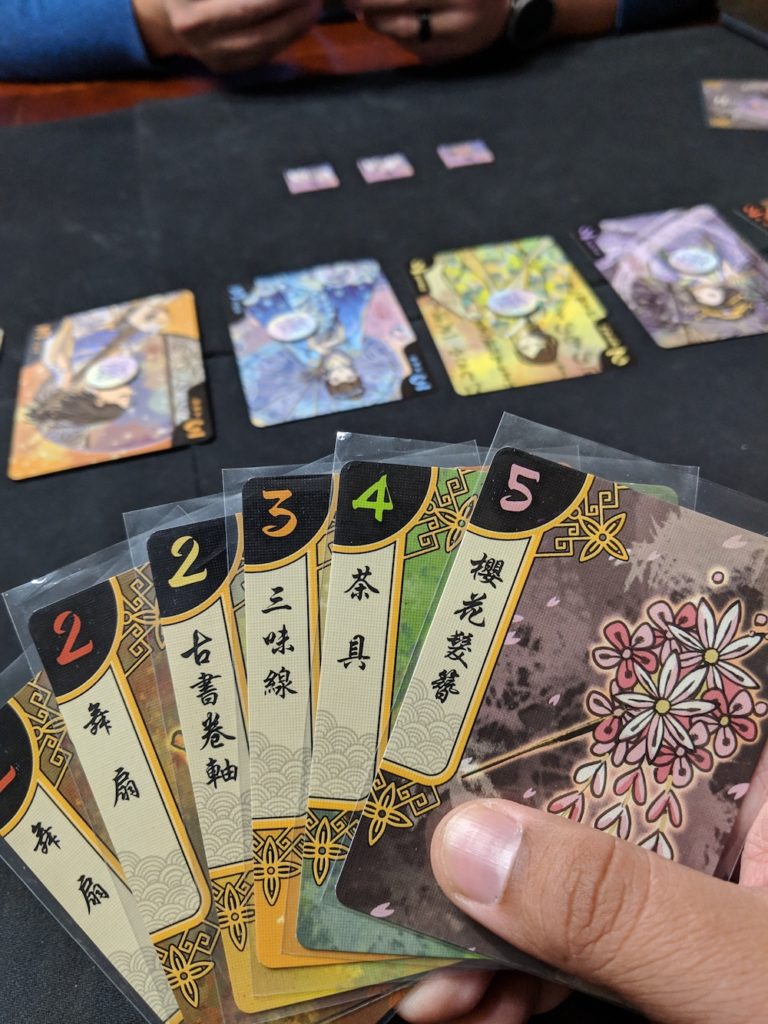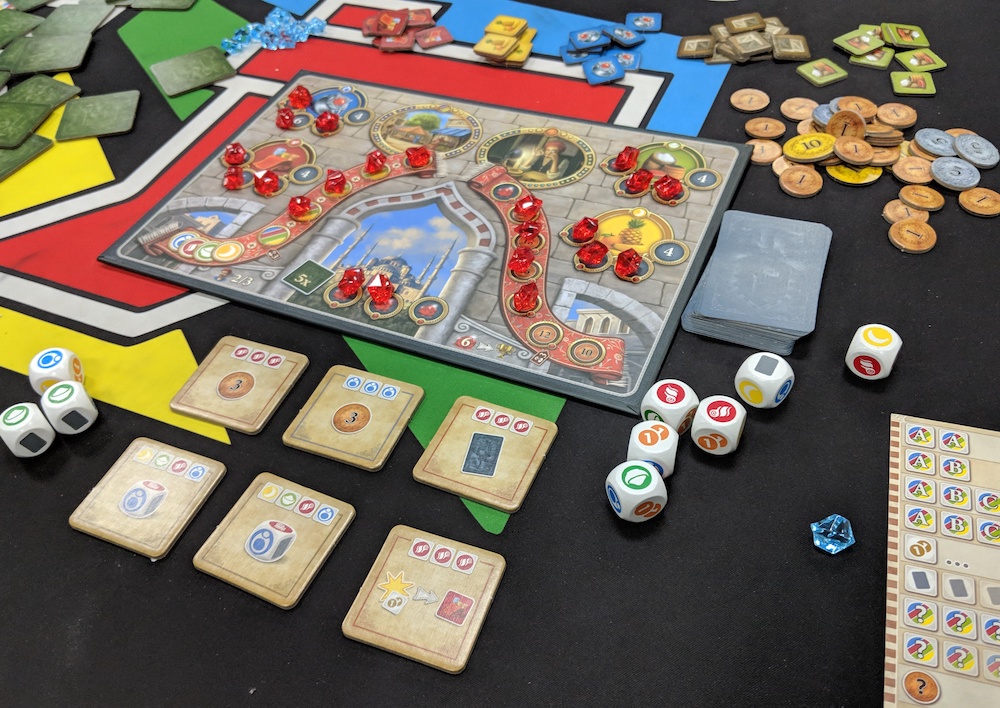game night
Harry Potter – Defence Against the Dark Arts
Deck-building at Hogwarts! Check out my review at That Hashtag Show.
Wreck Raiders: A Game Worth Diving Into
Check out my G33k-HQ review of Wreck Raiders!
Bubble Tea Brings Real-Time Boba Mania To Your Tabletop
I love boba, so getting to review Bubble Tea was a real treat! Here’s my first review for the G33K-HQ:
Godzilla: King of the Monsters
I’m a big fan of Godzilla. Always have been, ever since those countless Saturday morning monster movie showings during my childhood. I haven’t seen Godzilla: King of the Monsters yet and despite its bad reviews I’m looking forward to it.
Here’s something I wrote for Geek & Sundry about giant-monsters-smashing-cities board games.
Now on Kickstarter: Promenade
My favorite deck-building games (Trains, Clank! In! Space!, and Tyrants of the Underdark) have other mechanisms that make them more than just a card game. In Trains you build a network of train routes, Clank! In! Space! features push-your-luck and set collection, and Tyrants of the Underdark adds in area control. All of these games are based on deck-building and contain other elements that separate them from being another draw-five-cards-and-play Dominion clone.
Promenade from designer Ta-Te Wu and Sunrise Tornado Game Studio is a deck-building game that adds market manipulation to the mix. You play as an art connoisseur trying to amass the most expensive collection of paintings. You do this by acquiring paintings from the promenade and showing them in museums.
Players begin the game in typical deck-building fashion, with the same five basic gold (money) cards; however, in Promenade you’re also given five random painting cards. Painting cards serve two functions in the game: they can be used as money to purchase other painting/money cards or they can be displayed in the Museum for immediate victory points and possible end-game scoring.
The main board contains the Museum where all players display their paintings. These will earn them points based on whether or not an end-game goal is unlocked. Each exhibition in the Museum can display three to five paintings, and if any are filled up then that particular end-game scoring bonus is in play.
Players may perform two of three actions on their turn:
- Haggle: Discard a card and draw two more cards.
- Acquire: Spend the required amount for a card from the Promenade, either a painting from a gallery or a gold card from the Banque/Reserve.
- Show: Spend the required amount to add a painting card from your hand to an Exhibition in the Museum.
What makes Promenade so interesting and engaging is the Market Rating board. Each painting genre/color’s value is tracked here; each starts at one. So, if you draw five painting cards on your first turn, you have five gold to spend. Each time a painting is purchased from the Promenade or displayed in the Museum, its genre/color Market Rating will go up in value. Those same paintings that were worth only one gold each at the beginning will be worth more as the game progresses.
The game ends when there are 12 or more paintings in the museum, the main deck has been depleted, or one of the rating markers is 70 or higher.
End of game scoring consists of any end-game bonuses that were unlocked via the various exhibitions. You’ll also score points for your gold cards, depending on its current market value. Finally, you’ll get points for the painting cards in your deck, also depending on their current Market Rating.
Ta-Te Wu and Sunrise Tornado Game Studios have a hit on their hands in Promenade. It’s a unique, fun, and enjoyable deck-building game of art collecting that gamers will enjoy, even if they know nothing about art, investing, or investing in art. The market manipulation mechanism is my favorite part of Promenade; it adds a nice layer of depth to the game and makes it stand out among other deck builders.
Veteran deck-building players will appreciate how trashing cards happens: first, you can trash your starting cards or the 3-gold cards after using its bottom-card ability. Second, you can display a painting card in the museum, thus earning you immediate points and possibly end-game points. It’s a neat way to trash cards, since it earns you points, much like the Entomb action does in the underrated deck-builder Valley of the Kings. The set collection element comes into play here as well, since the various paintings will score points based on their final Market Rating.
The art collection theme works quite well in Promenade and the game is much more satisfying than if it would’ve been set in yet another generic fantasy world. The artwork is gorgeous; whenever I played it felt like I was wheeling and dealing valuable paintings. Everyone I played with was impressed by the game’s art and they were always blown away when they learned that the designer painted everything by himself.
Promenade has been a pleasant gaming surprise during the first quarter of 2019. While I’ve liked Ta-Te Wu’s previous Kickstarter games, I absolutely love Promenade. It takes the familiar deck-building mechanism and blends it with market manipulation into an entertaining game with a unique theme.
Thanks to Ta-Te Wu for providing a copy of Promenade for review. The Promenade Kickstarter campaign runs until May 12, 2019.
Play These Games Featuring Pie on National Pi Day
Every March 14th math geeks everywhere celebrate Pi Day, dedicated to everyone’s favorite irrational number, 3.14. From wearing Pi-centrific clothing to eating pies priced at $3.14, there are plenty of ways to celebrate the big day. For us board gamers we can play games that feature pies, whether sweet or savory. Check out these three (sorry, I couldn’t find 3.14 games) games for a fun way to celebrate 3/14.
Pie Town
In this worker placement game, you and your opponents use dice to select actions and bake pies for victory points. You collect ingredients for your pies, hoping to bake your secret recipe for more points. Of course, you’ll need to add more workers to keep up with demand and make more pies and eventually you’ll try to guess your opponents’ secret recipes as well. While the artwork and components are solid, Pie Town fell flat with me. Perhaps your pie-loving group will enjoy it more than I did.
New York Slice
While I do love me a good ol’ slice of apple pie for dessert, my favorite pies are of the pizza variety. I like ‘em all, from a simple cheese slice to a pizza with all of the toppings (and anchovies!).
The components in New York Slice are absolutely perfect, from the thick cardboard slices to the rulebook menu. Leave this out on the table and it can be easily mistaken for the real thing. I love the I-cut-you-choose mechanism, which typically involves some tough choices. Can you force your opponent to take something you don’t want? Or will they choose something just to spite you? Either way, don’t play New York Slice on an empty stomach; your stomach will be grumbling within the first few turns.
My Little Scythe
I wrote about my love for My Little Scythe over on Geek & Sundry, so let me just recap here. You’re in this My Little Pony-inspired world, trying to win a friendly tournament. One of your goals is to make pies: gather enough apples, then bake your pie. If you later travel into a space with an opponent, it’s time for a pie fight! Just like the original Scythe, you have a combat dial that you can modify with cards. There are several ways to win the game and no matter which route you choose, you’ll have a fantastic time playing My Little Scythe.
November Daily Game Challenge: SteamRollers
This is Day 30 of my Game-and-Blog-Every-Day-in-November Challenge. Search my blog for “Daily Game Challenge” for previous entries.
SteamRollers
It’s no secret that I love roll-and-write games. Rolling dice and marking a sheet of paper reminds me of childhood games of Yahtzee and it’s great having so many designers embrace the mechanism lately. SteamRollers was actually released in 2015, but was picked up by Stronghold Games and reprinted in May of this year. It’s been on my wish list since I played my buddy Tony’s copy at our local GenCant event, and I was fortunate to pick it up via trade at Strategicon in September.
You and your opponents build a railway network on your scoresheet and attempt to deliver goods to the various cities on the main board. On your turn, roll dice and select an action: build a track, upgrade your engine, deliver a good, or take a special action card. You score points based on the goods you’ve delivered, your railways, and bonuses.
I was an insta-fan of SteamRollers; I loved the mashup of pick-up-and-deliver and roll-and-write. It’s light and quick, and there are ways to mitigate bad rolls via the special action cards. Games last anywhere between 20 and 45 minutes, depending on player count, and the solo game is a good challenge. Fans of more in-depth train games will appreciate how quickly the game plays; if you don’t have a whole day to spend building up railroads and upgrading engines, SteamRollers may be the next best thing.
November Daily Game Challenge: Hanamikoji
This is Day 29 of my Game-and-Blog-Every-Day-in-November Challenge. Search my blog for “Daily Game Challenge” for previous entries.
Hanamikoji
One of the reasons why I immediately liked Hanamikoji is its tug-o-war scoring. It reminded me of one of my other favorite two-player games, Sun-Tzu. Hanamikoji, though, is a much quicker game and the focuses is entirely on outwitting your opponent.
You each have a hand of cards and you choose one of four actions, which will have you and/or your opponent either discarding or taking each other’s cards. I love the I-split-you-choose action, which is always a tough decision. You then place your cards on the geisha cards; whoever has the most cards on each will gain their favor. If you gain the favor of four geishas or their total is 11 or more, then you win.
For a 15-minute game Hanamikoji is packed with tense decisions and it’s one of the best two-player battle of wits you can have at the tabletop.
November Daily Game Challenge: Istanbul Dice
This is Day 28 of my Game-and-Blog-Every-Day-in-November Challenge. Search my blog for “Daily Game Challenge” for previous entries.
Istanbul Dice
I’m a fan of the original Istanbul so when my buddy Mike brought Istanbul Dice to game night, I couldn’t resist. It’s a slimmed-down version of Istanbul, with the original’s pick-up-and-deliver mechanism replaced by dice and set collection.
In the two-player game I played tonight, the game is a race to six rubies. On your turn, you roll six-sided dice with symbols for resources, cards, and money. You get exactly two actions per turn and the player aid explains the actions you can do on your turn; basically, whatever you roll can be traded in for more resources, money, special action cards, ongoing ability cards, or those precious rubies. You can also turn in resources for gems that allow you to re-roll any dice.
There’s a bit of engine-building in Istanbul Dice, which I don’t remember in the original game. I liked the quick play of Istanbul Dice and it had me itching to play the original sometime soon. Fans of Istanbul should like the dice version; it retains some of the feel of Istanbul and delivers it in a smaller and quicker game.
